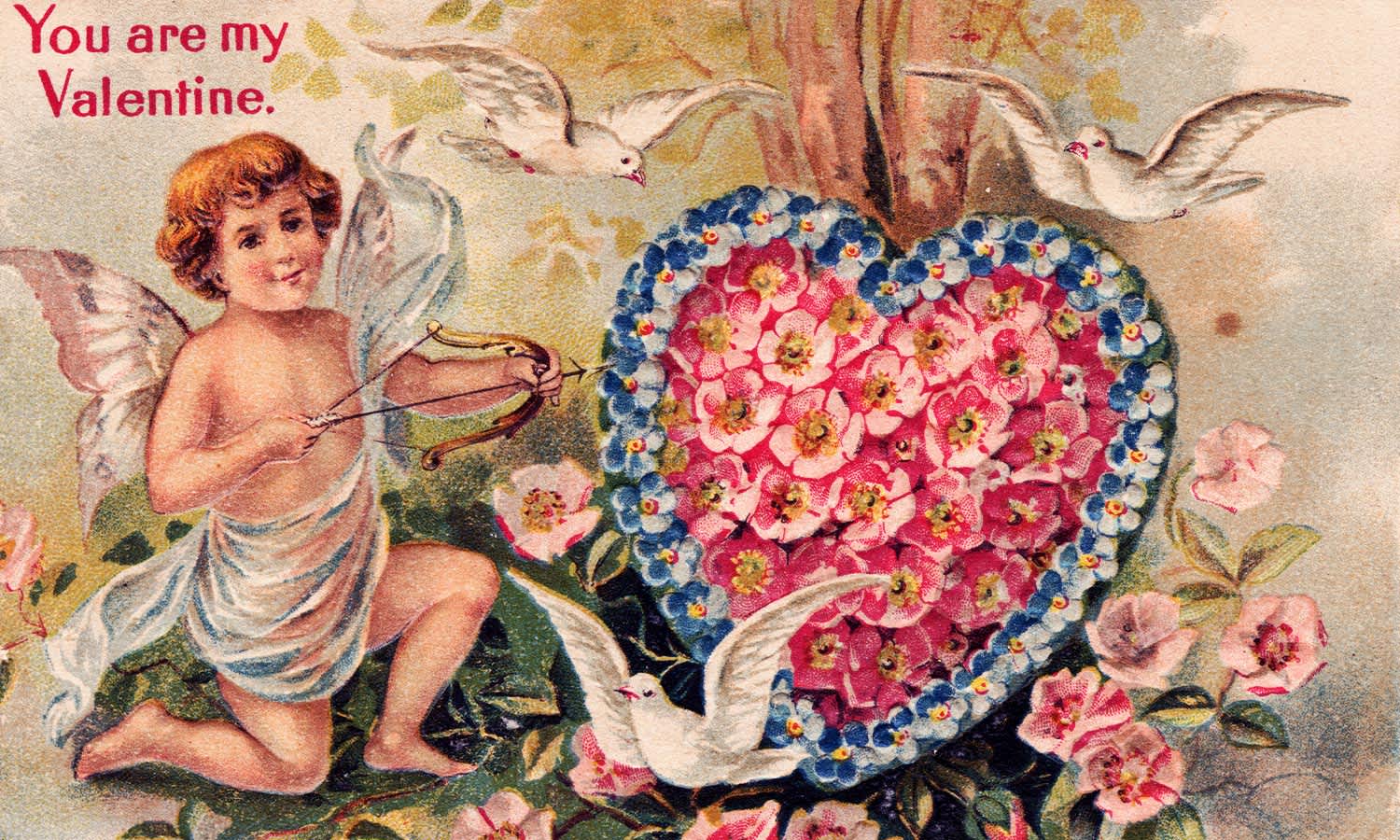Valentine’s Day: the most romantic day of the year. A day to scramble for a restaurant reservation and vastly overpay for a bunch of roses. That is, of course, unless you’re an ancient Roman, for whom Valentine’s Day is a great day to get drunk, bust out the whips, and sacrifice some animals. Oh, how times have changed.
While 14 February is regarded by some as a modern, commercialised fabrication designed to guilt people into spending money in an effort to prove their affection, the celebration of the date is actually a fairly ancient tradition whose origins are murky and sinister. In fact, they probably chime quite well with the contemporary sense of dread that many single people feel on Valentine’s Day.
Trying to figure out exactly why we work ourselves up in this frenzy of candle-lit dinners and heart-shaped chocolate boxes on this day is a genuinely perplexing riddle that historians have been trying to solve, without success, for centuries.
Who Was St Valentine?
Even the basics of Valentine’s Day are essentially contested. Who Saint Valentine was and why his day is acknowledged on 14 February is unclear. The Christian calendar is chock full of days dedicated to particular saints and not all of them are well understood.
What we do know is that there were several prominent early Christians who were killed for their beliefs and who went by the name Valentine. Two of those are honoured on 14 February and may have slowly melded into a composite saint, although neither of them had a particular association with romantic love.
One of these Christians was Valentine of Rome who was killed in 269 AD and made a saint in 496. The other was Valentine of Terni who was killed in 273 AD. Both of these saints were buried on the Flaminia Road from Rome to Rimini but, apart from the fact that they were early Christian martyrs, we don’t know much else about them. The former may have been involved in defying orders that banned Roman soldiers from getting married, but even this is tenuous.
So little is known about these people that even the Catholic Church decided they were no longer worth celebrating. The Vatican stopped acknowledging the date of 14 February in 1969.
The Roman Origin of Valentine’s Day
To figure out how these ancient saints got wrapped up in Hallmark cards and bouquets of roses, we might turn to the Romans.
The leading historical theory says that Valentine’s Day originated in the Roman festival of Lupercalia. This was a celebratory period from 13 to 15 February, designed to cleanse or purify the city, which itself dates even further back to pre-Roman pagan ritual.
Dedicated to the god Lupercus, goats were sacrificed in front of a cave thanks to their associations with fertility and protection. Priests would strip off, kill a goat, and run around hitting women with strips of their skin. Being hit was thought to bring about greater fertility and the promise of more children. It was, apparently, as mad as it sounded, and even Romans at the time were confused by it.
From the outside, it seems like the only similarities between this celebration and our own Valentine’s Day are the date and possibly a bit of whipping, depending on what you’re into. While many historians have tried to make the link between these events and the present, there doesn’t seem to be much there.
Modern Valentine’s Day
Some historians cite Geoffrey Chaucer, the famous medieval English poet, as the modern originator of Valentine’s Day. Chaucer wrote about Valentine’s Day as the day when birds begin to pair up, infusing the celebration with romantic symbolism. However, the date he was referring to could well have been in early May.
Beyond Chaucer, we have to skip forward to the 15th century when we find the first recorded instance of a Valentine’s Day greeting. This was written by the Duke of Orleans to his wife while he was imprisoned in the Tower of London. By this point, 14 February had somehow morphed into an annual celebration of romance, with feasting and drinking being key parts of the day. Again, we’re not really sure how we got here from the goat flogging, but there you have it, although feasting, drinking, and a focus on fertility were all part of the original Roman understanding. It’s possible that people were just big fans of the whole thing and wanted to keep it up each year, slowly separating it from whatever dubious historical event kicked it off.

From there, Valentine’s seems to only grow in significance and cultural prominence. The day is written about by Shakespeare and became synonymous with romantic poetry in the 17th century. The Georgians (that’s Brits in the 18th century) took the idea to new heights with the popularisation of Valentine’s cards which were sent to and from lovers. The cards were made hugely popular with the advancement of printing technology in the 19th century and often featured romantic sayings, hearts, and colourful patterning.
Hallmark Cards started making the first official Valentine’s cards in 1913. Buying and sending these was thought of as a key marker of romantic interest and affection and it’s from here that the concept of splashing out to impress your date or partner took root.
Nowadays, Australians spend roughly $1.1 billion on Valentine’s each year, with $110 million being spent on flowers alone, according to research from Finder.
So, while the day might seem like a crass, modern holiday, just know that you’re actually participating in a celebration almost as old as love itself. But, if you’re a stickler for tradition, a bit of goat sacrifice and some playful whipping might just be what you need to spice things up this Valentine’s Day.
Related: Aussie Ads From the 1950s, 1960s, and 1970s to Inspire Your Valentine’s Buys
Related: Valentine’s Day May Be Cheesy, But Your Gift Doesn’t Have to Be
Read more stories from The Latch and subscribe to our email newsletter.







